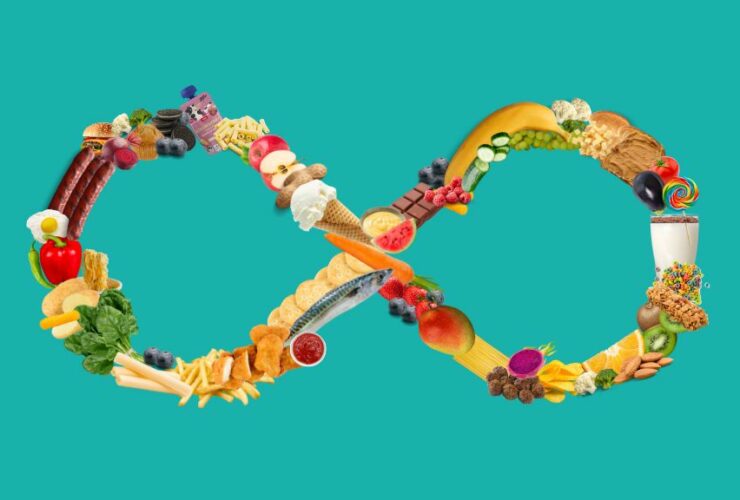Spin the Wheel of Wellbeing: A Holistic Approach For Clinicians
As Nutrition Professionals, we are well aware of the intricate relationship between food and overall well-being. It goes beyond just counting calories or prescribing meal plans; it involves understanding the holistic nature of an individual and the significant interconnection of factors impacting them. Enter the “Wheel of Wellbeing,” a comprehensive framework that examines and enhances wellness across multiple life dimensions. In this post, we will explore the significance of the Wheel of Wellbeing for dietitians, highlighting its role in working through client barriers and fostering a more profound connection with those we seek to assist.
Understanding the Whole Person using the Wheel of Wellbeing:
The Wheel of Wellbeing challenges us to view individuals as complex beings with interconnected facets of life. It invites us to delve beyond the surface and truly comprehend the intricacies of our clients. To create meaningful and sustainable behaviour change, we must consider not only their nutritional needs but also their beliefs, values, work and home life dynamics, and other contributing factors that collectively shape their identity and impact their ability to make change.
Key Dimensions of the Wheel of Wellbeing:
The Wheel of Wellbeing comprises eight key dimensions, each playing a pivotal role in an individual’s overall wellness:
Breaking Down Barriers:
A Barrier is imposed by someone (or something) else, that limits or restricts someone’s options. When it comes to food, barriers come in different forms and they aren’t always in our control.
When faced with client barriers, the Wheel of Wellbeing offers a roadmap for clinicians to navigate through these barriers. By thoroughly understanding these eight dimensions, we can pinpoint potential obstacles and tailor our approach to address them effectively. For example, a client struggling with dietary behaviour change may have underlying emotional or social challenges that need attention/referral for multi disciplinary support.
Incorporating the Wheel of Wellbeing into our practice as clinicians transforms the way we approach client care. It encourages a holistic understanding of individuals, guiding us to identify and address barriers with precision.
Identity-Based Goal Setting:
One of the strengths of the Wheel of Wellbeing is its ability to facilitate identity-based goal setting. By considering all aspects of an individual’s life, you can collaboratively set goals that align with your client’s values and aspirations. This approach not only enhances motivation but also creates a more sustainable path to improved well-being.
Curious to learn more? Cue The Compeat Academy’s “Breaking Through Barriers” Course. Unlock invaluable insights on overcoming client and clinician barriers to achieve unparalleled success! Immerse yourself in practical strategies and an enlightening live session with Rachel Howard, a renowned Social Worker with lived experience supporting people in remote communities. Elevate your ability to help your clients by becoming a Compeat Academy Pro Member today!



